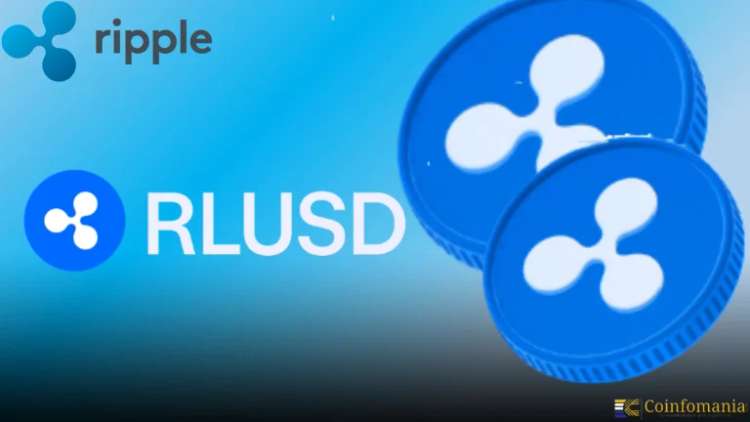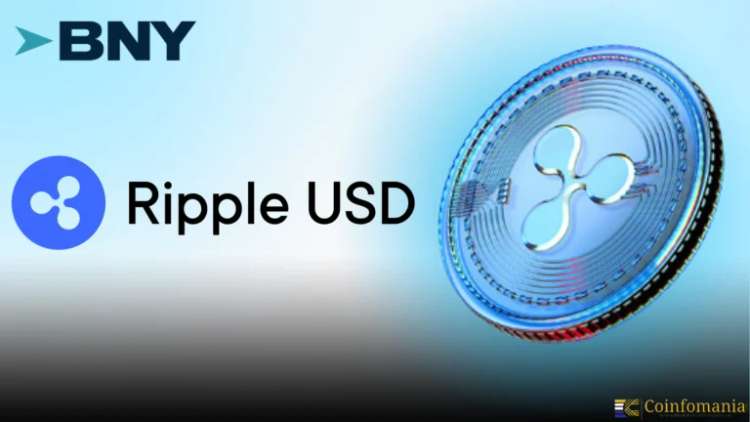RPL
As of November 06, 2025, Rocket Pool (RPL) is trading at approximately 6.08 USD, reflecting a 4.15% increase from the previous close.
| Current Price | 24h Price Change | 7-Day Avg Price | Support Level | Next Resistance |
| $6.08 USD | 4.15% | $7.37 USD | $3.31 USD | $39.63 USD |
📈 Technical Analysis Summary
- Price Movement: The 4.15% increase indicates Bullish momentum; renewed investor confidence.
- 7-Day Average Comparison: Trading below the 7-day average ($7.37 USD); weak or consolidating trend; watch for support breakdown.
- Support and Resistance Levels: Price is above support ($3.31 USD); confirms bullish base. Room for growth before hitting resistance ($39.63 USD).
- RSI Analysis: RSI at 63.44 indicates Neutral zone; balanced market.
- MACD Analysis: Positive MACD (+0.04); suggests bullish momentum.
📊 Market Sentiment
| Indicator | Value | Interpretation |
|---|---|---|
| RSI | 63.44% | Neutral; neither overbought nor oversold |
| MACD | +0.04 | Bullish; suggests upward momentum |
| Above 7-Day Avg? | No | Indicates bearish pressure or cooling off |
| Above Support? | Yes | Suggests price stability above support. |
Rocket Pool Price Prediction Preview
| Forecast Range | Prediction Trend |
|---|---|
| Daily | 📈 Bullish — Bitcoin is expected to maintain upward momentum short-term |
| Weekly | 🔻 Weak — Risk of short-term pullback if support breaks |
| Monthly | 🚀 Bullish — RPLUSD could test $9.73 if momentum sustains |
| Yearly | 🧯 Uncertain — Macro factors may limit long-term upside for RPLUSD |
Related News

Ripple Donated $25 Million to Support Small Businesses
Ripple announced the donation of 25 million RLUSD stablecoins on September 15, 2025. The funds will support small business and military veterans in America. The contribution will be separated into the Accion Opportunity Fund (AOF) and Hire Heroes USA. This is what Ripple attempts to achieve in its RLUSD stablecoin, and incurring lower costs and […]
Triparna Baishnab
Author

Ripple $RLUSD Africa Partners With Chipper Cash and VALR
Hanan Zuhry
Author

Ripple Taps BNY to Custody RLUSD, Boosting Stablecoin Trust
Shweta Chakrawarty
Author

DFSA Approves Ripple’s RLUSD as a Compliant Digital Token for Use Within the Dubai International Financial Centre
Mikaeel
Author

Bitget Drives Ecosystem Growth with Ripple’s RLUSD Launch and CoinPal Integration of 6000+ Global Merchants
Emmmaculate Araka
Author
Rocket Pool is a community-driven project that gives all Ethereum users the opportunity to stake Ethereum. Launched last year, users can take part in Ethereum 2.0 staking with as low as 0.01 ETH or operate a node using only 8 ETH (32 ETH is the typical requirement), while keeping collateral in the Rocket Pool token, RPL. When liquid staking tokens like rETH are generated, Rocket Pool makes sure that flexibility, liquidity and equal access do not risk the main focus of Ethereum’s plan — remaining centered on decentralization. One of the reasons it’s so popular is that it offers a strong model for decentralized liquid staking.
How Does Rocket Pool Work?
Rocket Pool operates on a dual-layer staking model:
- Stakers: Users who want to earn ETH staking rewards without running infrastructure can deposit ETH and receive rETH, a liquid staking token that appreciates in value as rewards accrue.
- Node Operators: Anyone with 8 ETH and the required RPL collateral can spin up a mini pool validator node. Rocket Pool matches the 8 ETH with another 24 ETH from the user pool, forming the 32 ETH required to activate an Ethereum validator.
Node operators earn commission fees (set between 5–20%), priority reward cuts, and RPL staking incentives. This design aligns the interests of both stakers and operators while securing Ethereum in a decentralized way.
Rocket Pool vs Other Staking Platforms
Rocket Pool's main value proposition lies in trustless staking. Unlike centralized providers like Coinbase or Kraken, Rocket Pool doesn’t custody user funds. Compared to competitors like Lido:
Feature | Rocket Pool | Lido Finance | Centralized CEX |
Staking Min. | 0.01 ETH | 0.01 ETH | Typically 0.01 ETH |
Node Requirements | 8 ETH + RPL | Permissioned | N/A |
Liquid Token | rETH | stETH | Varies |
Custodial | No | Semi-decentralized | Yes |
Slashing Protection | Yes | Yes | Varies |
Rocket Pool is Ethereum-native and decentralized by design — ideal for users prioritizing self-custody, protocol transparency, and distributed validator infrastructure.
Technology Behind Rocket Pool
Rocket Pool is built using Ethereum smart contracts, with the following core components:
- Smart Nodes: Open-source software enabling users to run validator clients.
- Minipools: Validator setups combining 8 ETH (node operator) + 24 ETH (user stake).
- Deposit Pool: Holds ETH from users waiting to be matched with mini pools.
- rETH Token: A rebasing token representing user deposits, growing in value as staking rewards accrue.
- RPL Token: The native utility token used for node collateral and incentives.
Rocket Pool also integrates with ETH staking clients (like Prysm, Lighthouse, Teku) and has built-in slashing and downtime insurance via overcollateralized RPL.
Is Rocket Pool (RPL) a Good Investment?
As of May 2025, RPL trades at $4.86, with a circulating supply of approximately 21.38 million tokens. Although the token remains nearly 96% below its all-time high, it has shown signs of steady recovery alongside broader Ethereum staking momentum.
Rocket Pool’s strength lies in its decentralized design, growing total value locked (TVL), and the increasing number of node operators. With over $1.69 billion staked and a low market cap-to-TVL ratio of 0.06, many see RPL as significantly undervalued. While current token utility mainly centers on node operators, future governance expansion and performance-based incentives could unlock broader relevance over time. Given its $102 million market cap, however, investors should be prepared for higher volatility as the ecosystem matures.
From the current price, RPL could rise to the $8–$10 range in 2025 if ETH rallies and demand for liquid staking derivatives (LSDs) rebounds. On the downside, key support zones at $4.00 and $3.00 may offer stability if bearish sentiment returns.
Legal and Regulatory Consideration 2025
Unlike centralized providers, Rocket Pool being non-custodial and decentralized helps it dodge some regulatory problems. Even so, any regulatory changes about ETH in the U.S. SEC could affect investors in various indirect ways.
Key points:
- Not a DAO (yet): Governance is limited, reducing direct user liability.
- No KYC: Users can interact without identity verification.
- Regulatory Edge: Because Rocket Pool doesn’t custody funds, it avoids being classified as a centralized staking intermediary.
However, node operators may face future compliance pressure if jurisdictions require staking nodes to be registered businesses.
How to Buy and Trade Rocket Pool (RPL)?
In addition to trading RPL on Binance, Coinbase, Kraken and KuCoin, you can also find it on Uniswap, Balancer and 1 inch. Spot trading, staking or running nodes can all be done easily with the crypto, given its strong liquidity.
Popular Trading Pairs:
- RPL/USDT
- RPL/ETH
- RPL/BTC
Staking & Yield:
RPL is required for node operators who stake ETH and earn ETH plus RPL rewards. Regular stakers can provide liquidity on DEXs and earn variable yields, typically between 4% and 15% APY.
Steps to start trade:
- Understand how crypto trading works—know the risks and mechanics.
- Learn why people buy RPL—staking rewards and decentralized node participation.
- Fund your exchange wallet with ETH or USDT.
- Purchase RPL through spot trading on CEXs or DEXs.
- Withdraw your tokens to a secure non-custodial wallet if holding or staking long-term.
- Decide if you want to become a node operator—RPL is mandatory for this role.
- If you’re a regular staker, consider liquidity pools for passive yield.
- Monitor market trends, staking rewards, and protocol updates to manage your investment.
Rocket Pool Wallets and Security
You can store RPL and rETH in any Ethereum-compatible wallet:
- Hot Wallets: MetaMask, Rabby, Trust Wallet
- Cold Storage: Ledger, Trezor (via MetaMask integration)
Security tips:
- Use hardware wallets for long-term RPL holders.
- Set up multisig or smart contract wallets for node operators.
- Monitor validator performance via Rocket Pool explorer to avoid slashing.
rETH holders also enjoy passive security — their ETH is staked across a wide validator set, reducing centralization risk.
How to Secure Your Rocket Pool Holdings?
- Use Cold Wallets: Especially for RPL tokens staked as collateral.
- Run Monitoring Tools: Node operators should use uptime and slashing alerts.
- Smart Contract Risk: While Rocket Pool has undergone audits, interacting with contracts always carries risk — use official interfaces.
- Diversify Nodes: To minimize exposure, consider distributing your ETH across rETH, Lido, or native staking.
Rocket Pool Adoption and Use Cases
Rocket Pool adoption continues to grow due to its unique offerings:
- rETH as Collateral: Accepted on Aave, MakerDAO, and other DeFi platforms.
- Institutional DeFi: Used by DAOs and ETH treasuries for liquid staking exposure.
- Home Validators: Enables “solo” stakers to participate without 32 ETH.
- DeFi Integrations: rETH is included in liquidity pools (Balancer, Curve) and vaults (Yearn, Beefy).
As Ethereum scales (proto-danksharding, restaking), protocols like Rocket Pool will play a critical role in maintaining validator decentralization.
Rocket Pool's Future Outlook & Growth Potential
The protocol is strongly aligned with Ethereum’s decentralization ethos. Key catalysts:
- EigenLayer Restaking Integration: In progress — will allow node operators to earn layered rewards.
- Decentralized Governance: Expected DAO formation could drive more community involvement.
- rETH Demand Surge: Growing institutional interest in liquid staking assets.
- Lido Dominance Risk: Rocket Pool offers the strongest counterweight to Lido’s 30% staking share.
Challenges:
- Complex UX: Running a node is still tech-heavy.
- RPL Token Utility: Currently limited mostly to node operators.
If Rocket Pool continues improving ease of use and expanding DeFi integrations, its share in the ETH staking market could grow substantially.
Pros and Cons of Investing in Rocket Pool (RPL)
Pros:
- Decentralized ETH staking alternative
- rETH adoption in major DeFi protocols
- Low mcap/TVL suggests undervaluation
- Strong alignment with Ethereum’s goals
- Earn RPL and ETH rewards as a node operator
Cons:
- RPL utility is niche (mainly for node ops)
- Complex setup for home validators
- Stiff competition from Lido and CEXs
- Price highly volatile (96% down from ATH)
Final Thoughts
Rocket Pool is a key component of Ethereum’s decentralized system for staking. By using Lido, users have the ability to stake ETH on their own, independent node operators are rewarded and staking can still be done by using rETH. Even though RPL does not play a big role, the Plasma team has built a stable, tested and well-matched protocol with Ethereum’s future goals in mind.
Anyone looking to invest in Rocket Pool has to be ready for staking, decentralized processes and a risky market — suitability is not for everyone.
Frequently Asked Questions
What happens if a Rocket Pool node operator underperforms or is slashed?
Rocket Pool has a built-in slashing insurance mechanism backed by RPL collateral. If a node operator is penalized for downtime or misbehavior, the RPL they staked as collateral may be slashed to protect user deposits. This acts as an incentive for high uptime and ethical behavior.
Can rETH be used to earn additional yield in DeFi?
Yes. rETH can be deposited in protocols like Aave, Yearn, Balancer, Curve, and MakerDAO to earn extra yield. Some DeFi strategies even stack yields by borrowing against rETH or pairing it in liquidity pools. However, these strategies carry smart contract and liquidation risks.
Is there a cap on how much ETH can be staked through Rocket Pool?
Yes. Rocket Pool’s staking capacity is directly tied to the amount of RPL staked by node operators. To expand ETH staking capacity, more RPL must be bonded as collateral. This mechanism prevents overleveraging and encourages demand for RPL, but also introduces a growth bottleneck.
Does Rocket Pool support MEV or block proposer rewards for node operators?
Rocket Pool node operators can capture MEV (Maximal Extractable Value) and proposer rewards, just like any other Ethereum validator. Rocket Pool does not interfere with or redirect those earnings — they go directly to the node operator, on top of protocol incentives.
Can I stake RPL without running a node?
No. RPL staking is only available to node operators. Regular users who deposit ETH and receive rETH do not need or use RPL. This limits RPL's staking utility to technically-inclined participants but helps maintain a strong alignment between RPL holders and the network’s performance.
How does Rocket Pool handle validator exit or rage quitting?
Rocket Pool allows node operators to exit their validators and dissolve their minipools. When a validator exits (manually or due to slashing), the ETH is returned to the pool, and the operator can reclaim their RPL collateral. Rage quitting prematurely may result in penalties or loss of rewards.
Are there any projects or funds created by the community in Rocket Pool?
Yes. Through its open grants, Rocket Pool provides support for tools, dashboards, improved user interfaces and educational material. Rocket Watch, RP Status and the integration with Dune Analytics have all won support from the community or have been funded.
What makes rETH different from stETH according to its technical design?
Rather than having its price change, rETH rises in value as more time passes (much like yield-bearing tokens), while stETH increases in units instead. In other words, rETH is readily available in protocols such as Aave or Maker which can’t handle updating token balances.
Is Rocket Pool resistant to government restrictions?
Rocket Pool was made for user-friendly, independent staking, so it is harder for states or big companies to censor staking activities. Validators can use whatever execution client or relay they prefer, or bypass using centralized MEV-Boost software if they wish.
How can developers build on or integrate Rocket Pool into their apps?
Rocket Pool exposes public smart contracts and APIs for developers to build staking dashboards, rETH integrations, or node operator tooling. The protocol is open-source and offers SDKs and technical documentation on GitHub, with active support via Discord and the community forum.